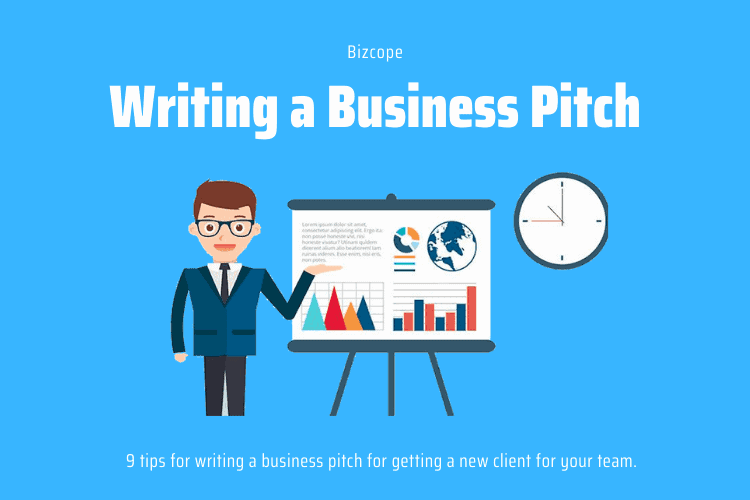This comprehensive guide, “How to Pitch Your Services to a Company You Admire,” provides a roadmap for successfully presenting your offerings to a company you deeply respect. It delves into the crucial aspects of understanding the company’s needs, crafting a compelling pitch, and preparing for a successful meeting. The guide’s structure is designed to equip you with the knowledge and tools necessary to effectively communicate the value of your services and achieve your professional goals.
From meticulous research into the company’s mission and target audience to crafting a unique value proposition, this guide walks you through every stage of the process. It also emphasizes the importance of a tailored approach, highlighting the specific nuances of various pitch formats and the necessity of adapting your presentation to the unique culture of each company. The guide concludes with essential post-pitch strategies, providing actionable steps for follow-up and relationship building, even in the face of rejection.
Understanding the Company’s Needs
Thorough understanding of a company’s values, initiatives, and target audience is crucial when pitching your services. This knowledge allows you to tailor your pitch to their specific needs and demonstrate your ability to contribute to their success. By researching their current projects and identifying their pain points, you can position your services as a valuable solution.A well-researched understanding of the target company and its current landscape enables you to craft a compelling and effective pitch.
This allows you to articulate how your expertise can address their specific needs and contribute to their goals.
Identifying Core Values and Mission
Understanding a company’s core values and mission statement provides insight into their priorities and long-term objectives. These values often guide decision-making and influence the company’s approach to various projects and initiatives. Analyzing publicly available documents, such as the company’s website, annual reports, and mission statements, will often reveal these underlying principles. Furthermore, social media presence, press releases, and statements from leadership can offer additional insights into the company’s guiding principles.
Analyzing Recent Projects and Initiatives
Examining recent projects and initiatives offers valuable insights into the company’s current priorities and strategic direction. Monitoring press releases, news articles, and industry publications can reveal new projects, collaborations, and significant milestones. Analyzing the impact of these projects – whether in terms of financial gains, market share, or customer satisfaction – can further illuminate the company’s objectives and the challenges they face.
Researching Target Audience and Pain Points
Understanding the company’s target audience is critical for tailoring your pitch effectively. Researching their demographics, behaviors, and needs will allow you to demonstrate a deep understanding of their challenges. Analyze the company’s marketing materials, customer testimonials, and competitor analysis to gain insights into the target audience. Identifying the pain points faced by this target audience provides a clear understanding of the problem your services could solve.
By understanding the pain points, you can position your services as a direct solution to these problems.
Comparing Strengths and Weaknesses
A comparative analysis of the company’s strengths and weaknesses is crucial for a tailored pitch. This analysis will help you identify areas where your services can provide the most value. Consider the company’s market position, financial standing, technological capabilities, and competitive advantages.
| Aspect | Strengths | Weaknesses |
|---|---|---|
| Market Position | Dominant market share, strong brand recognition | Vulnerable to disruptive technologies, limited presence in emerging markets |
| Financial Standing | Strong financial performance, stable cash flow | High debt levels, potential for funding constraints |
| Technological Capabilities | Cutting-edge technology, advanced infrastructure | Lagging in certain areas of technology, outdated software |
| Competitive Advantages | Strong customer relationships, superior product quality | Higher pricing than competitors, weak distribution network |
Examples of Successful Campaigns/Strategies
Studying successful campaigns or strategies implemented by similar companies can provide valuable insights and inspiration. Identify companies with comparable industry positioning, target audiences, and goals. Analyze the key elements that contributed to their success, and how they addressed specific pain points. This allows for adapting effective strategies to suit your pitch and the target company. For instance, companies that have successfully leveraged social media marketing campaigns to enhance brand awareness and customer engagement can offer valuable lessons.
Studying their strategies will help you understand the best approaches for the target company.
Highlighting Your Unique Value Proposition

Successfully pitching your services requires showcasing how your offerings uniquely address the target company’s needs. This involves a thorough understanding of their challenges and demonstrating how your expertise provides a superior solution compared to competitors. This section delves into the critical aspects of highlighting your unique value proposition.Understanding the company’s needs is a foundational step, and it is crucial to identify specific pain points or areas where your services can offer significant improvements.
This section emphasizes how to leverage your skills and experience to solve these problems. Directly connecting your expertise to their challenges is key to a persuasive pitch.
Identifying Alignment with Company Needs
To effectively highlight your unique value proposition, meticulously align your skills and experience with the company’s expressed needs. This involves a detailed review of their stated goals and potential challenges. For instance, if a company seeks increased efficiency in their marketing campaigns, you should emphasize your expertise in data-driven marketing strategies and your track record of achieving measurable results for similar businesses.
Highlighting quantifiable achievements and results is essential to demonstrate the tangible value of your services.
Elaborating on Solution-Oriented Services
Articulating how your services can solve the company’s problems or enhance their offerings is vital. This involves clearly explaining the benefits of your services and how they directly address the identified needs. For example, if you offer a cloud-based project management system, highlight how it can streamline workflows, improve communication, and enhance team collaboration. Quantifiable results, such as time saved or increased productivity, further strengthen your argument.
Comparative Analysis of Services
A comparative analysis of your services versus competitors is crucial. This showcases your unique selling points and differentiates your offerings from the competition. For instance, if you offer a software solution, highlight its innovative features that competitors lack. Clearly outlining the advantages of your service over others will position your services as the superior choice. Be prepared to articulate how your service delivers a superior experience and better outcomes.
Illustrative Examples of Successful Pitches
Learning from successful pitches in similar situations provides valuable insights. Researching successful pitches from similar companies or industries helps to identify successful strategies and tailor your approach to the target company. Examples can include case studies of companies that achieved significant improvements in efficiency or profitability using similar services. Drawing parallels to successful strategies can provide a strong foundation for your pitch.
Table of Services and Potential Benefits
This table illustrates how your services directly address the company’s needs and offer quantifiable benefits.
| Service | Potential Benefit | Quantifiable Impact |
|---|---|---|
| Data-driven Marketing Strategy | Increased lead generation and conversion rates | 15-20% increase in leads within 3 months |
| Cloud-based Project Management System | Streamlined workflows and improved communication | 20% reduction in project completion time |
| Custom Software Development | Tailored solution to meet specific business needs | Increased operational efficiency by 10-15% |
Crafting a Compelling Pitch
A compelling pitch is more than just a presentation; it’s a strategic conversation designed to showcase your value proposition and secure a mutually beneficial outcome. It requires understanding not only your services, but also the specific needs and culture of the company you’re approaching. This section details how to structure a pitch that captivates attention, adapts to the target audience, and fosters a productive dialogue.A successful pitch hinges on presenting a clear and concise narrative that resonates with the company’s objectives.
This requires meticulous preparation, including a thorough understanding of the company’s current position, future aspirations, and the problems your services can solve. This approach not only enhances your chances of securing a partnership but also positions you as a valuable advisor.
Structuring a Captivating Pitch
A well-structured pitch captures attention quickly and keeps the audience engaged throughout. Begin with a concise overview of your value proposition, highlighting how your services directly address the company’s needs. Transition seamlessly into a demonstration of your understanding of their current situation and aspirations. Conclude by outlining a clear next step and call to action.
Tailoring Your Pitch to the Company’s Culture
Understanding the company’s culture is crucial for crafting a pitch that resonates authentically. Research the company’s values, communication style, and decision-making processes. Tailor your language, tone, and delivery to reflect these characteristics. For instance, a company known for its collaborative approach may benefit from a more conversational and interactive pitch.
The Importance of Active Listening and Adapting to Feedback
Active listening is paramount during a pitch. Pay close attention to the audience’s reactions and adjust your approach based on their feedback. Are they engaged? Are there questions or concerns? A responsive approach to feedback demonstrates your commitment to understanding their perspective and adapting your message to their needs.
This responsiveness builds trust and demonstrates your ability to be a valuable partner.
Effective Opening Lines for a Pitch
A compelling opening line immediately grabs the audience’s attention and sets the tone for the entire pitch. Avoid generic statements; instead, focus on a personalized, insightful opening. For example, “I understand your recent challenges in streamlining the sales pipeline, and our innovative solution can significantly improve efficiency in this area” or “Based on my research, I see a clear opportunity to leverage technology to improve your marketing ROI.”
A Step-by-Step Process for Delivering a Confident Pitch
A structured process ensures a polished and confident delivery. First, rehearse your pitch thoroughly to build confidence. Second, practice active listening and be prepared to adjust your approach based on feedback. Third, maintain a professional and engaging demeanor throughout the presentation.
- Preparation: Thorough research and preparation of the pitch are essential to ensure a confident and impactful presentation. This includes researching the company’s culture, values, and recent news, as well as developing key talking points that directly address their needs.
- Introduction: Start with a compelling opening statement, highlighting your understanding of their challenges and how your services can help. Avoid generic introductions, and focus on demonstrating specific value to the company.
- Presentation: Structure your presentation logically, clearly outlining the problem your service solves, your proposed solution, and the expected benefits. Use visuals to enhance understanding and engagement.
- Q&A: Actively listen to questions and provide detailed, thoughtful responses. Be prepared to address concerns and demonstrate your expertise in the area.
- Conclusion: Summarize your key takeaways and Artikel the next steps in the process, such as scheduling a follow-up meeting or providing additional materials.
Preparing for the Pitch Meeting

A well-prepared pitch is crucial for making a strong impression and increasing your chances of securing a deal. Thorough preparation extends beyond simply outlining your value proposition; it involves understanding the specific needs of the target company and anticipating potential questions. This diligent approach allows you to confidently articulate your solutions and showcase your expertise.
Researching Key Decision-Makers
Understanding the decision-making process within the target company is paramount. Identifying the key decision-makers, their professional backgrounds, and their priorities allows you to tailor your pitch to their specific concerns and demonstrate a genuine understanding of their needs. Researching their past projects, industry publications, and public statements provides valuable insights. This knowledge enables you to craft a pitch that resonates with their individual motivations and priorities.
Anticipating Potential Questions
Anticipating potential questions is a proactive approach that demonstrates your preparedness and allows you to address concerns head-on. This includes questions about your experience, your proposed solutions, and the potential impact on their business. By anticipating these questions and formulating thoughtful responses, you project confidence and competence. It’s crucial to understand the company’s current challenges and position your solution as the ideal solution to overcome those challenges.
Rehearsing the Pitch and Identifying Areas for Improvement
Rehearsing your pitch is vital for ensuring a smooth and impactful delivery. Practicing aloud allows you to identify areas for improvement in terms of clarity, conciseness, and overall presentation. This practice session should include identifying areas where your pitch might fall short, and making adjustments to enhance its impact. Rehearsing helps to refine your communication style, ensuring that your message is conveyed effectively and efficiently.
Potential Questions and Responses
| Potential Question | Thoughtful Response |
|---|---|
| “What makes your service unique compared to other providers?” | “Our service distinguishes itself through [specific feature 1] and [specific feature 2], which address the unique needs of [target customer type] in [target industry]. We achieve this through [brief explanation of methodology] leading to [quantifiable result]. We’ve seen success in [similar client scenario] demonstrating the positive impact of our unique approach.” |
| “What is your pricing model?” | “Our pricing model is structured around [pricing model description], ensuring a transparent and predictable cost structure for [client type]. This allows us to deliver [quantifiable result] while maintaining a competitive edge.” |
| “What is your experience with companies of our size?” | “We have a proven track record of success with companies similar in size and scope to yours, particularly in [specific industry]. Our experience with [specific project or client] demonstrates our ability to deliver [desired result] within [timeframe].” |
Gathering Feedback from Trusted Colleagues
Seeking feedback from trusted colleagues is a valuable step in refining your pitch. Colleagues who understand your proposal and the target company can offer constructive criticism and identify areas where your pitch can be improved. Their insights can help you address any potential weaknesses and fine-tune your presentation for maximum impact. A group discussion with colleagues allows for diverse perspectives, enhancing the overall effectiveness of your approach.
Post-Pitch Follow-up and Next Steps
Following up effectively after a pitch meeting is crucial for solidifying your position and demonstrating genuine interest in the company. A well-executed follow-up can turn a potential partnership into a concrete opportunity. This section details the steps to take to ensure a positive outcome, from managing rejection to nurturing the relationship.
Effective Follow-up Strategies
A timely and personalized follow-up email or message demonstrates your commitment and professionalism. Avoid generic templates; tailor your message to the specific company and the discussion points raised during the meeting. Highlight key takeaways and reiterate your value proposition in a concise and compelling manner.
- Within 24-48 hours of the meeting: Send a brief thank-you email summarizing key discussion points and expressing enthusiasm for the opportunity. This initial follow-up solidifies your interest and reinforces your understanding of the company’s needs.
- One week later: Send a follow-up email referencing specific points from the meeting. This email could include relevant resources, articles, or case studies demonstrating your understanding of the industry and the company’s challenges. Demonstrate continued interest.
- Periodic follow-ups (every few weeks): Keep the conversation flowing without being intrusive. Share relevant industry news or updates that demonstrate your continued engagement and thought leadership.
Handling Rejection Gracefully
Rejection is a part of the sales process. Responding to a negative decision with grace and professionalism allows for future opportunities.
- Acknowledge the decision promptly: Send a polite email acknowledging the company’s decision. Express appreciation for their time and consideration. Avoid rehashing the pitch or offering excuses.
- Learn from the experience: Analyze what went well and what could be improved for future pitches. Understanding the reasons behind the rejection allows you to refine your approach.
- Maintain a professional relationship: Keep the door open for future opportunities. A respectful and professional interaction can lead to a reconsideration of your services.
Nurturing Relationships
Maintaining contact after a pitch demonstrates sustained interest and allows you to stay top-of-mind.
- Offer ongoing support: Share relevant industry articles, insights, or resources that demonstrate your expertise and continued commitment to their success.
- Offer value without expecting immediate results: Your ongoing support, even if it does not lead to a sale immediately, positions you as a valuable resource for the company.
- Stay updated on the company’s activities: Monitor their social media presence, press releases, and any other relevant updates to stay abreast of their current needs and developments.
Example Follow-up Emails
Here are examples of effective follow-up emails and messages.
- Example 1 (within 24 hours): “Dear [Contact Name], Thank you for taking the time to meet with me today. I enjoyed discussing [Specific topic from meeting]. I’ve attached a few resources that I think might be of interest to the team. Best regards, [Your Name].”
- Example 2 (one week later): “Dear [Contact Name], Following up on our meeting last week, I wanted to reiterate how impressed I was with [Company’s initiative]. The resources I shared in my previous email could be particularly valuable as you [mention specific company challenge]. I look forward to the possibility of collaborating further. Best regards, [Your Name].”
Action Items and Deadlines
A structured approach to follow-up ensures that important tasks are completed on time.
| Action Item | Deadline |
|---|---|
| Send initial thank-you email | Within 24-48 hours of meeting |
| Send follow-up email referencing meeting points | One week after meeting |
| Monitor company updates, share relevant insights | Ongoing |
| Evaluate pitch outcomes and refine strategies | Within 2-4 weeks post-pitch |
Illustrative Case Studies

Case studies are powerful tools for demonstrating the value of your services. They showcase your expertise and successful outcomes, making your pitch more compelling and persuasive. By presenting concrete examples, you build credibility and trust with potential clients, ultimately increasing your chances of securing a contract.
Successful Pitches Targeting Specific Company Types
Illustrative examples of successful pitches often depend on understanding the target company’s specific needs and challenges. For example, a pitch to a rapidly growing startup might focus on rapid deployment and scalability, while a pitch to a large, established corporation might emphasize proven methodologies and long-term strategic alignment.
- Startups: A pitch to a SaaS startup focused on marketing automation could highlight how the service increased lead generation by 40% in the first quarter, leading to a 25% rise in customer acquisition costs within the same timeframe. This illustrates a quick return on investment (ROI) and rapid scalability, appealing to the startup’s need for rapid growth and measurable results.
- Established Enterprises: A pitch to a large retail company might emphasize how the service streamlined their supply chain, leading to a 15% reduction in operational costs and a 10% improvement in inventory management efficiency over a 12-month period. This demonstrates the long-term value proposition for a large, established organization.
- Non-profit Organizations: A pitch to a non-profit focused on fundraising could highlight how the service increased donor engagement by 20%, leading to a 15% increase in donations over a six-month period. This illustrates the service’s positive impact on the organization’s mission.
Key Components of a Well-Structured Case Study
A strong case study is more than just a success story; it’s a persuasive narrative. It effectively communicates the problem, your solution, and the positive results achieved.
- Client Background: Briefly describe the client’s industry, size, and challenges. This establishes context and demonstrates your understanding of their situation.
- Problem Statement: Clearly articulate the problem the client faced before engaging your services. Quantify the problem whenever possible. For example, “The client was experiencing a 20% decline in customer retention.”
- Solution Overview: Describe the specific services you provided and how they addressed the identified problem. Highlight the key strategies and tactics implemented.
- Results and Metrics: Quantify the positive outcomes achieved. Provide concrete data and metrics to support your claims. Examples include increased revenue, reduced costs, improved efficiency, or enhanced customer satisfaction.
- Client Testimonial: Include a direct quote from the client praising the value of your services and the positive impact they had. This adds credibility and social proof.
Case Study Template
A structured template for a case study is crucial for consistency and impact. This template facilitates clear and concise communication of the service’s value.
| Section | Description |
|---|---|
| Client Profile | Company name, industry, size, challenges |
| Problem Statement | Quantifiable description of the problem |
| Solution Overview | Description of services provided and strategies |
| Results & Metrics | Quantifiable results, e.g., % increase/decrease in key metrics |
| Client Testimonial | Direct quote from client about the positive impact |
| Key Takeaways | Summary of the key learnings from the case |
Quantifiable Results from Previous Clients
Highlighting quantifiable results is crucial. This data-driven approach demonstrates the tangible value of your services, making your pitch more persuasive.
- Example: “XYZ Consulting improved client ABC’s customer satisfaction scores by 15% within the first three months of engagement, resulting in a 10% increase in customer retention.”
Detailed Description of a Specific Company and Your Service Offering
Consider a hypothetical case: “Tech Solutions, a medium-sized software development company, was struggling with project management inefficiencies, leading to missed deadlines and increased costs. Project delays were averaging 20% over the projected timeline. XYZ Consulting implemented a new project management software and training program, which resulted in a 15% reduction in project completion times and a 10% decrease in overall project costs.
The software also provided better visibility into project progress, enabling the company to proactively address potential bottlenecks. The client expressed significant satisfaction with the implementation and praised XYZ Consulting’s responsiveness and adaptability.”
Handling Different Pitch Types

Crafting a compelling pitch is crucial, but the format matters significantly. Different methods—presentations, emails, or meetings—demand tailored approaches to maximize impact. Understanding these nuances allows you to effectively communicate your value proposition and secure the opportunity.Various delivery methods exist, each requiring adaptation to the specific context and audience. A well-structured presentation, a concise email, or a dynamic meeting can significantly influence the outcome.
By understanding the optimal approach for each format, you enhance your chances of success.
Comparing Pitch Formats
Different pitch formats require distinct approaches, reflecting the nuances of communication. A presentation, for instance, allows for detailed elaboration, while an email demands succinctness and clarity. Understanding these distinctions enables a more strategic and effective pitch.
- Presentations: These are ideal for conveying complex information, demonstrating your understanding of the company’s challenges, and showcasing your solution. They allow for visual aids, interactive elements, and a deeper exploration of your services. The presentation should be structured logically, highlighting key aspects of your service, and demonstrating the value proposition to the company’s goals.
- Emails: Emails are suitable for initial contact, providing concise summaries of your proposal, and scheduling meetings. They should be concise, professional, and clearly state your value proposition. Include key metrics, relevant examples, and a compelling call to action.
- Meetings: Meetings provide a dynamic platform for direct interaction and addressing potential concerns. Active listening and a flexible approach are essential. Prepare talking points, anticipate questions, and be prepared to adjust your approach based on the conversation.
Adapting Your Approach for Each Format
Effective communication necessitates a tailored approach. Presentations benefit from a structured narrative, while emails demand a concise and impactful message. Meetings require flexibility and a responsive approach.
- Presentation: Structure your presentation around the company’s needs. Use visuals to illustrate your service’s benefits and provide data-backed evidence. Practice your delivery to ensure clarity and engagement.
- Email: Craft a compelling subject line to capture attention. Highlight the key benefits of your service and the value it brings to the company. Provide a clear call to action, outlining the next steps.
- Meeting: Anticipate potential questions and prepare thoughtful responses. Listen actively to understand the company’s concerns and adjust your pitch accordingly. Be prepared to demonstrate flexibility and address concerns.
Mastering the Short Pitch (Elevator Pitch)
The elevator pitch is a concise summary of your service, designed to capture attention and spark interest in a short timeframe. This is crucial for initial contact and networking.
“The elevator pitch should be memorable, conveying the core value proposition in a compelling manner.”
- Structure: Start with a captivating hook, highlighting the problem your service solves. Clearly state your solution and its benefits. Conclude with a strong call to action, prompting the listener to learn more.
- Examples: “We help companies like yours streamline their marketing efforts, leading to a 20% increase in leads.” or “Our innovative software solution helps reduce operational costs by 15% and improve efficiency.”
Illustrative Pitches
Here are examples of different pitch formats, emphasizing clarity and impact:
- Presentation Pitch: A slide deck demonstrating the specific advantages of your service, highlighting its compatibility with the company’s existing processes. The slides should use visuals, data, and a narrative to illustrate the value proposition.
- Email Pitch: A concise email introducing your service, summarizing key benefits, and inviting a meeting to discuss specific needs. The email should be highly personalized and clearly Artikel the benefits of engaging with your service.
- Meeting Pitch: A dynamic conversation demonstrating the understanding of the company’s unique requirements and highlighting how your service addresses these. The pitch should be responsive to the conversation, emphasizing your service’s ability to resolve the specific issues presented.
Best Pitch Format for Different Company Types
The optimal pitch format depends on the company’s size, structure, and communication style. A small startup might respond better to a brief email, while a large corporation might require a comprehensive presentation.
| Company Type | Best Pitch Format | Rationale |
|---|---|---|
| Small Startup | Email, brief meeting | Direct, concise communication is key. |
| Medium-sized Company | Meeting, presentation | A balanced approach, providing a deeper understanding. |
| Large Corporation | Presentation, detailed proposal | Demonstrating a thorough understanding and addressing potential complexities. |
Closing Notes

In conclusion, “How to Pitch Your Services to a Company You Admire” offers a structured approach to a crucial professional skill. By understanding the company, highlighting your unique value proposition, crafting a compelling pitch, preparing meticulously, and effectively following up, you can significantly enhance your chances of success. This guide empowers you to not only present your services but also to build lasting relationships with companies you admire.
Remember, effective communication and adaptability are key to making a lasting impression.